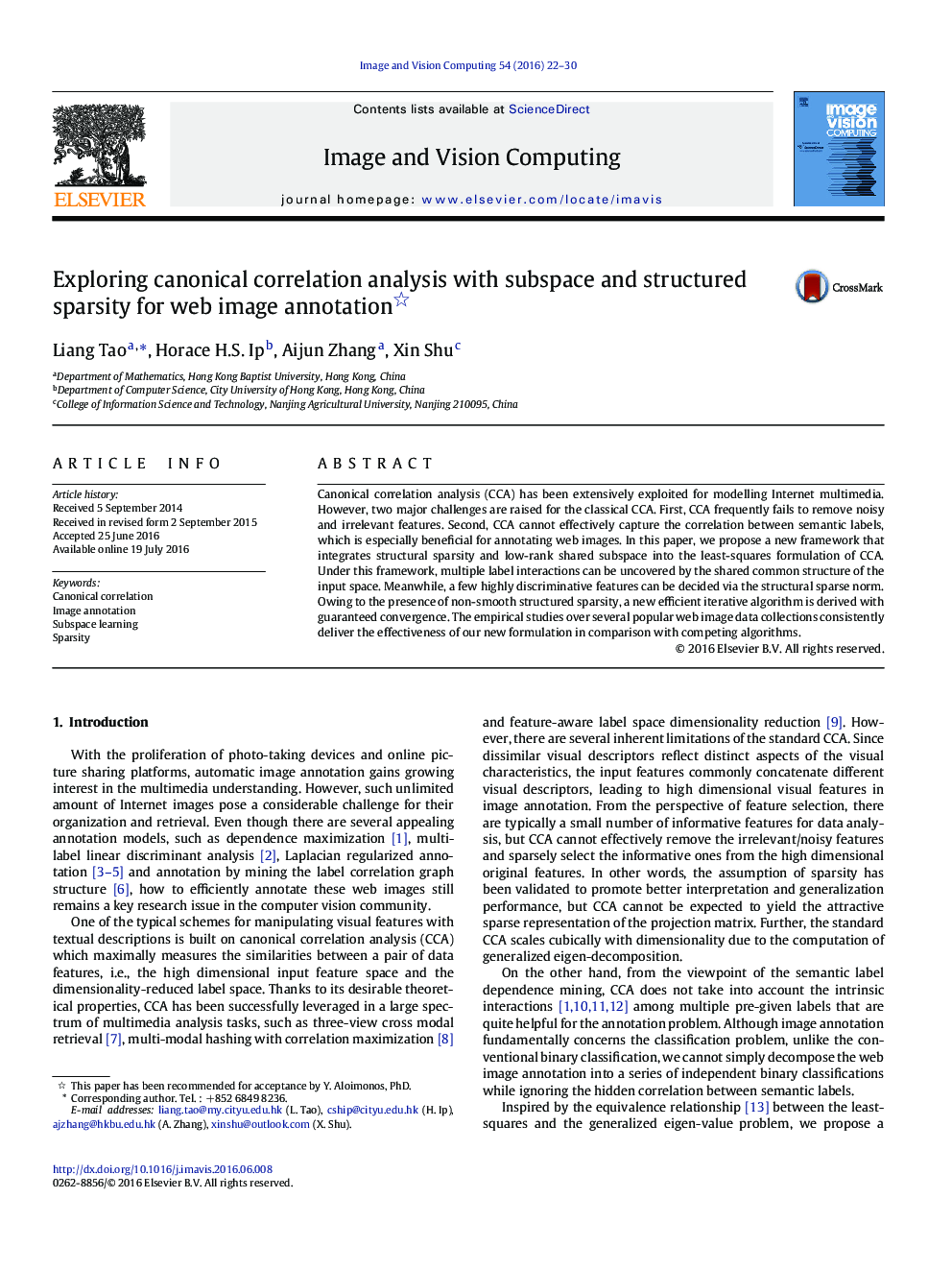| Article ID | Journal | Published Year | Pages | File Type |
|---|---|---|---|---|
| 526700 | Image and Vision Computing | 2016 | 9 Pages |
•We model least-squares CCA with joint subspace extraction and structured sparsity.•Low rank shared subspace is incorporated into CCA to capture label relationships.•Structural sparse feature learning is employed for the canonical loadings.•An efficient iterative algorithm is designed via the randomized technique.•Evaluations show the effective Internet image annotation with high dimensionality.
Canonical correlation analysis (CCA) has been extensively exploited for modelling Internet multimedia. However, two major challenges are raised for the classical CCA. First, CCA frequently fails to remove noisy and irrelevant features. Second, CCA cannot effectively capture the correlation between semantic labels, which is especially beneficial for annotating web images. In this paper, we propose a new framework that integrates structural sparsity and low-rank shared subspace into the least-squares formulation of CCA. Under this framework, multiple label interactions can be uncovered by the shared common structure of the input space. Meanwhile, a few highly discriminative features can be decided via the structural sparse norm. Owing to the presence of non-smooth structured sparsity, a new efficient iterative algorithm is derived with guaranteed convergence. The empirical studies over several popular web image data collections consistently deliver the effectiveness of our new formulation in comparison with competing algorithms.
